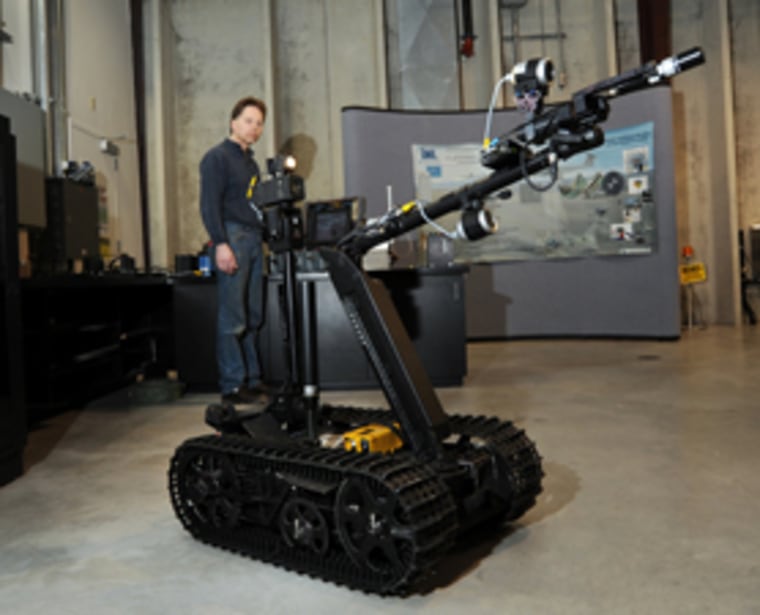Outfitted with radiation-hardened cameras, GPS and sensors, a modified military robot landed in Japan on Thursday to help out at the stricken nuclear power plant.
The Talon robot, built by QinetiQ North America and modified by the Department of Energy’s Idaho National Lab, has done field work before, including supporting military operations in Iraq and Afghanistan and assisting at the site of the World Trade Center in New York after the 2001 terrorist attacks.
The Fukushima nuclear power plant in Japan, however, will be Talon’s first tour of duty in a highly radioactive environment. Workers have been struggling to regain control of three nuclear reactors and two spent fuel storage areas after a 9.0-magnitude earthquake and killer tsunami wiped out critical cooling systems on March 11.
Tapping the ocean and other sources for water saved the reactor vessels from a meltdown, but managing all that contaminated water spawned an enormous new problem.
A Nuclear Regulatory Commission report, obtained by The New York Times, “paints a very bleak picture,” David Lochbaum director of the Union of Concerned Scientists’ Nuclear Safety Project, told reporters during a conference call Thursday.
“It is a bad situation over there. It's not getting as much better with time as we had hoped,” Lochbaum said. “Their instrumentation, their ability to monitor what's going on, they don't have many options. The fact that they have to handle two spent fuel pools and three reactor cores with kid gloves, don't have any margin for error, basically makes it — it's hard to say that things are going to get better or things are going to get worse, because they have so many challenges to face on so many places that it's going to be difficult to be 100 percent right all five times.”
Highly radioactive water that has pooled in and around the reactors is complicating efforts to keep the uranium and uranium-plutonium fuels cool, as workers cannot access many of the affected areas for any length of time, due to safety concerns.
Once the Talon robot reaches the plant, it will help the Japanese visualize radiation in the environment, Nicole Stricker, spokeswoman with the DOE’s Idaho National Laboratory, told Discovery News.
The robot can take radiation readings and stamp them geospatially with a GPS device.
“From the radiation and GPS data, a Google Earth map is generated and the radiation levels are superimposed on the map and color-coded according to intensity. As the robot navigates in the environment, a breadcrumb-like trail is generated and displayed on the operator control unit. The system is self-contained and has the ability to work with a variety of radiation sensors,” Stricker wrote in an email.
The robot includes a chemical, biological, radiological, nuclear and explosive detection kit that can identify more than 7,500 environmental hazards, including toxic industrial chemicals and volatile gases. It also has temperature and air quality indicators and night vision, and it can sense sounds up to 1,000 meters away.
The Department of Energy ‘bot joins two other Talons, two smaller Dragon Runner robots and equipment that turns Bobcat loaders into unmanned vehicles that can shovel, grapple and perform other tasks without an operator. The equipment, worth about $1 million, was donated by QineticQ, said company spokeswoman Jennifer Pickett.
